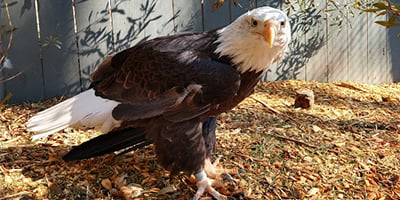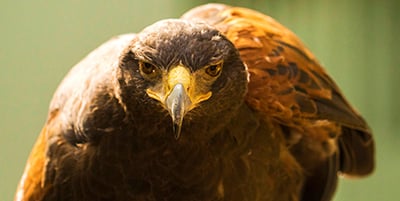
Bald Eagle
The bald eagle is the only eagle unique to North America. They can be found along coastlines, lakes, rivers, swamps, and marshes. The Bald Eagle’s primary diet is fish—they have spiny scales and sharp talons to hang on to their slippery bodies. Bald Eagles will also hunt rabbits, squirrels, other birds, and even young deer. Visit our bald eagles today in Eagle Ridge.
Busch Gardens Williamsburg is home to rescued bald eagles and an amazing conservation and education ambassador. Busch Gardens has partnered with the United States Fish and Wildlife Service to care for our Bald Eagles.

Barn Owl
In America, Barn Owls are increasingly being used in Integrated Pest Management (IPM) as an alternative to highly toxic rodenticides. Vineyards, rice fields, sugar cane crops, and orchards can all benefit from the installation of Barn Owl nestboxes.
In their first autumn, European Barn Owls settle into a home range where they spend the rest of their lives. However, in some parts of North America, Barn Owls migrate south to escape cold winter weather.

Black Vulture

Harris's Hawk

Eurasian Eagle Owl
Conservation Fund
Since 2003, the SeaWorld & Busch Gardens conservation fund has provided well over $15 million in grants to over 1,200 organizations.




